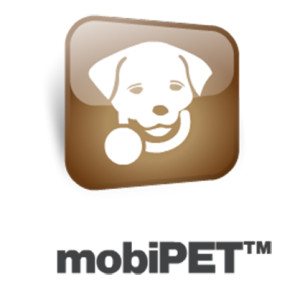As Deadly Hurricane Matthew Approaches, Follow These Tips to Keep Your Pets Safe
Tips for before, during, after storm could make difference between life or death
WASHINGTON, D.C., October 5, 2016 – With deadly Hurricane Matthew battering the Caribbean and expected to move into the United States, American Humane’s rescue team is mobilizing and issuing lifesaving tips to keep people and pets safe before, during and after the storm.
In preparation for this monster hurricane, American Humane is securing its offices and staff in Florida and strategically moving vital equipment, including two 50-foot emergency rescue vehicles into position so that highly trained workers are poised to deploy and provide rescue and shelter services in the area(s) expected to be hardest hit.
Expert interviews and lifesaving information are available to help people and animals caught in the path of this significant storm. Here, in advance, are a few important tips:
Before the storm
- NEVER leave animals behind. Review your evacuation plans and know a safe place where your pets can go if you need to evacuate. Evacuation destinations may include a friend or family member’s home, going to a pet-friendly hotel, or temporarily housing your pet(s) at a boarding facility. Plan multiple routes to your safe destination.
- Microchip your pets and properly affix a tag on your pet’s collar with your name, address and cellphone number so they may be returned quickly in case you are separated from your pets. Update your microchip registrations and pet license information to ensure its current and consider including the name and contact information of an out-of-area contact just in case you are unreachable in a disaster zone.
- Consider registering with mobiPET, a free new, high-tech, visual “AMBER Alert” for missing pets that helps reunite lost pets with their owners. Get information here: www.mobipet.me.
- Tie down or anchor outside objects that might fly about and injure someone.
- Double-check your disaster preparedness kit for your pets (e.g., First Aid kit, leashes, and pets’ carrying cases, bowls, sanitation materials, chew toy, minimum 3 days, ideally 7-10 days of food, meds, water).
- Evacuate your family and pets as early as you can and remember to take your family and your pet’s disaster preparedness kit if you do leave.
- Bring children and pets inside; bring outdoor animals inside with a carrier ready large enough to turn around and lie down comfortably.
- Have a carrier and leashes at the ready.
- If your family must evacuate, ALWAYS take your pets with you.
During the storm….if you cannot evacuate
- Choose a safe room for riding out the storm—an interior room without windows – and take your entire family there, including your pets.
- Stay with pets. If crated, they depend on you for food and water.
- Keep your emergency kit in that room with you (food, water, litter, meds).
- Know your pet’s hiding places. That’s where they may run; keep them with you.
- Secure exits and cat doors so pets can’t escape into the storm.
- Do not tranquilize your pets. They’ll need their survival instincts should the storm require that.
After the storm
- Make sure the storm has fully passed before going outside and assess damages before allowing children or animals out.
- Keep dogs on a leash and cats in a carrier, and children close at hand. Displaced objects and fallen trees can disorient pets and sharp debris could harm them.
- Give pets time to become re-oriented. Familiar scents and landmarks may be altered and cause a pet to become confused or lost.
- Keep kids and animals away from hazards such as downed power lines and water that may be contaminated.
- Uncertainty and change in the environment affect animals, presenting new stresses and dangers. Your pet’s behavior may change after a crisis, becoming more aggressive or self-protective. Be sensitive to these changes and keep more room between them, other animals, children or strangers. Animals need comforting, too. Comfort your pet with kind words and lots of pats or hugs. If possible, provide a safe and quiet environment, even if it is not their own home.
“Hurricanes can be deadly situations for pets if they are separated from their families,” said Randy Collins, American Humane’s national director for emergency animal rescue services. “It is important that every parent and pet parent in the path of this destructive storm heed these lifesaving tips. We hope all of our friends in the Caribbean and the United States, both two- and four-legged alike, stay safe while riding out Hurricane Matthew.”
About American Humane
American Humane is the country’s first national humane organization, founded in 1877, and the first to serve animals in disasters and cruelty cases. Visit American Humane at www.americanhumane.org today.
About the American Humane Animal Rescue Program
American Humane’s animal rescue program was created in 1916 at the request of the U.S. Secretary of War to save war horses wounded on the battlefields of World War I Europe. Since then, Red Star has been rescuing animals of every kind and have been involved in virtually every major disaster relief effort from Pearl Harbor to 9/11, Hurricane Katrina, the Joplin, Missouri and Moore, Oklahoma tornadoes, the Japanese and Haitian earthquakes, and Superstorm Sandy. Over just the past dozen years our rescue teams have saved, helped and sheltered more than 80,000 animals.











